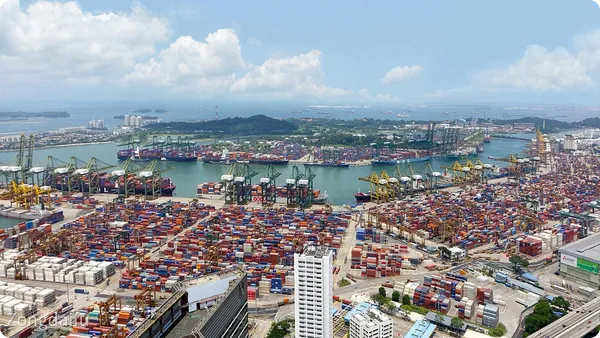I believe that everyone is familiar with the certificate of origin. In international trade, the certificate of origin is an important basis for the importing country to determine the tariff treatment of imported goods. Different countries have different tariff policies on imported goods. With a certificate of origin that meets the regulations, the goods may enjoy lower tariff rates or even duty-free treatment when imported, reducing the import cost of the goods, thereby enhancing the price competitiveness of the products in the international market. It can be called the "economic passport" of the goods.
So, what are the specific uses of the certificate of origin? What are the differences between different certificates? How to apply for it? What are the details that are easy to overlook? Let's reveal them one by one.

use
- Determining tariff treatment:It is an important basis for the customs of the importing country to determine the tariff rate of goods. Depending on the place of origin, the goods may enjoy different tariff rates such as most-favored-nation treatment, generalized system of preferences treatment, and preferential tariffs under free trade agreements.
- Trade StatisticsCustoms of various countries use certificates of origin to count the source and destination of goods in order to collect and analyze trade data and provide a basis for formulating trade policies.
- Securing trade order:It helps importing countries to supervise imported goods, prevent goods from circumventing trade restrictions and anti-dumping and anti-subsidy measures through unfair means, and maintain a fair trade order.
- Product traceability:In international trade, consumers and regulatory agencies may pay attention to the origin of products to understand information such as product quality and safety. The certificate of origin can achieve traceability of goods.
Classification
- General Certificate of Origin: It proves that the goods originate from a specific country or region. It is the basis for the customs of the importing country to levy normal tariffs and trade statistics on the goods. It is applicable to most ordinary trade situations.
- GSP Certificate of Origin: It is a document proving the origin under a general, non-discriminatory, non-reciprocal tariff preference system granted by developed countries to developing countries for the export of manufactured and semi-manufactured products (including certain primary products), such as the FORM A certificate.
- Regional Preferential Certificate of Origin: It is a certificate issued according to different regional trade agreements and used to enjoy preferential tariff treatment under regional trade agreements. Common ones include the Form E certificate of the China-ASEAN Free Trade Area and the Form K certificate of the China-Korea Free Trade Area.
- Special certificate of origin:Certificates of origin issued for specific products or specific trade scenarios, such as tobacco authenticity certificates, certificates of origin for agricultural products exported to the European Union, etc., have specific formats and uses.
Process
- Enterprise Record:Applicants must register with the local customs or CCPIT, submit business license, organization code certificate, foreign trade operator registration form and other relevant materials, and complete the entry of product and company information.
- Submit your application:Enterprises select the appropriate type of certificate of origin based on the actual situation of the goods, and submit an application to the customs or CCPIT through the electronic declaration system or in paper form, while providing relevant trade documents such as commercial invoices, packing lists, bills of lading, and information proving the origin of the goods, such as raw material purchase invoices, production and processing process descriptions, etc.
- Visa review:After receiving the application, the customs or CCPIT will review the information and goods submitted by the enterprise and conduct on-site inspection if necessary. After the review is passed, a visa will be issued and a certificate of origin will be issued.
- Certificate Collection: Enterprises can go to the designated location to collect paper certificates or obtain electronic certificates through the electronic system according to the method of obtaining certificates they choose.

Basis for Identification
- Fully obtain standard: Goods are completely obtained or produced in one country or region, such as agricultural products harvested or minerals mined in that country. This situation is relatively simple to identify, and the source of the goods is their place of origin.
- Substantial change standard:When goods are produced by two or more countries or regions, the country or region where the goods are substantially changed during the production process shall be the country of origin. The judgment of substantial change usually includes tariff classification change standard, regional value content standard, processing procedure standard, etc.
Related details
Fill in the specification
- Certificate Number:Compiled by the visa agency according to certain coding rules, it is unique and generally consists of numbers and letters. It is used for certificate identification and query.
- Exporter Information: The detailed name, address and contact information of the exporter should be filled in, ensuring that it is consistent with the registration information such as the business license, and the name must be exactly the same as the exporter name on the invoice.
- Importer Information: Accurately fill in the importer's name, address and other information.
- Description of goods: The name, specifications, model, quantity, packaging and other information of the exported goods should be described in detail and accurately. It should be consistent with the description on other trade documents such as commercial invoices and bills of lading, and avoid using vague or general expressions.
- Origin Standard:According to the actual production situation of the goods, accurately fill in the corresponding standard code of origin.
- Stamp and signature of the visa agency:It must be stamped with the official seal of the visa agency and signed by the authorized visa personnel. The seal and signature should be clear, complete and in the correct position.
Validity
- General Certificate of Origin:There is generally no clearly defined unified validity period. It is usually determined based on the requirements of the importing country and the terms of the trade contract. In actual operation, it is generally considered valid for a period of time (such as half a year or a year) after the goods are exported.
- GSP Certificate of Origin:The certificate is generally valid for 10 months. Goods that need to enjoy preferential treatment in the importing country must be submitted to the customs of the importing country within the validity period of the certificate.
- Regional Preferential Certificate of Origin:Different regional trade agreements have different validity periods. For example, the FORM E certificate of the China-ASEAN Free Trade Area is generally valid for one year from the date of issuance.
Change and reissue
- Change:If the certificate of origin is found to be incorrect after it is issued, the enterprise should apply to the visa agency for change in a timely manner. A written application must be submitted, stating the reason for the change, and providing relevant supporting materials, such as the corrected trade documents. After the visa agency reviews and approves it, it will reissue the certificate and mark the original certificate as "invalid".
- Reissue: If the certificate of origin cannot be used due to loss, damage, etc., the enterprise can apply to the visa agency for reissue within the validity period of the certificate. When applying, a written statement must be submitted, declaring that the original certificate is invalid, and providing relevant information of the original certificate and other materials that can prove the export of goods, such as customs declarations, copies of bills of lading, etc., which will be reissued after the visa agency verifies that they are correct.
Special situation handling
- Overseas visa:For some large enterprises or group companies, the place of production may be inconsistent with the place of registration. In this case, the enterprise can apply for a visa at a different place from the place of production, but it needs to provide relevant supporting materials, such as the production site lease contract, production equipment list, etc., to prove the actual production of the goods.
- Transitional trade:When goods are subject to re-export trade, the handling of the certificate of origin is rather special. Generally, it is necessary to apply for a re-export certificate or a note from the relevant agency at the re-export location to prove that the goods have not been substantially processed or changed during the re-export process. At the same time, the customs of the importing country may conduct a stricter review of the goods in re-export trade and require more supporting documents, such as re-export bills of lading, re-export trade contracts, etc.

In the future, with the continuous advancement of technology and the continuous optimization of the trade environment, the application process and management model of the certificate of origin will continue to innovate and improve, bringing more convenience and opportunities to enterprises. Relevant enterprises should fully realize the importance of the certificate of origin, actively use this powerful tool, and seize international market opportunities. Finally, if you need agency services or more other support in import and export trade, please contact us!


 Follow customer service WeChat
Follow customer service WeChat